Parenting
0 min read
Skin-to-skin contact: Why the mother’s touch is so powerful

Cradlewise Staff
Ever wondered why a baby stops crying when it’s handed over to the mother? We have too! In this article, we will see how a baby’s sense of touch develops and the healing power of a mother’s touch.
Let’s start with a personal experience:
My brother was visiting us over the weekend.
He is the Mr. Fix-it-all of the family.
While he does fix most things, he also, in good humor, never fails to rub it in when he does so. Unfortunately, I have been at the receiving end of his jocular jibes very often.
But, I got my chance to get back to him last evening. Having put my baby to sleep, I finally managed to take time out for a shower, only to hear my little angel start crying. I was getting ready to step out and calm my little one when my brother called out that he would take care of the baby.

A few minutes later, I stepped out to see my brother holding the baby, trying to calm her down. I stood watching them for about five minutes when he handed her to me with a resigned look. It took my angel a minute to calm down and fall asleep in my arms. The look on my brother’s face was priceless as I smiled and said, “There are things that you cannot fix, but I can.”
What is skin-to-skin contact during the golden hour?
Birthing is one of the greatest joys of life. After spending hours in labor, the first time you hold your baby is a moment you’ll remember for the rest of your life.
Did you know?
Levels of oxytocin increase during labor and the birth of the baby. This helps in creating an early bond between the mother and the newborn.

Did you know?
Levels of oxytocin increase during labor and the birth of the baby. This helps in creating an early bond between the mother and the newborn.
What is the golden hour after birth?
The first hour after your baby is born is called the Golden Hour.
The golden hour is the best time to cement the connection between mother and child. Mothers should spend maximum time with constant skin-to-skin contact to form a strong bond with the baby.
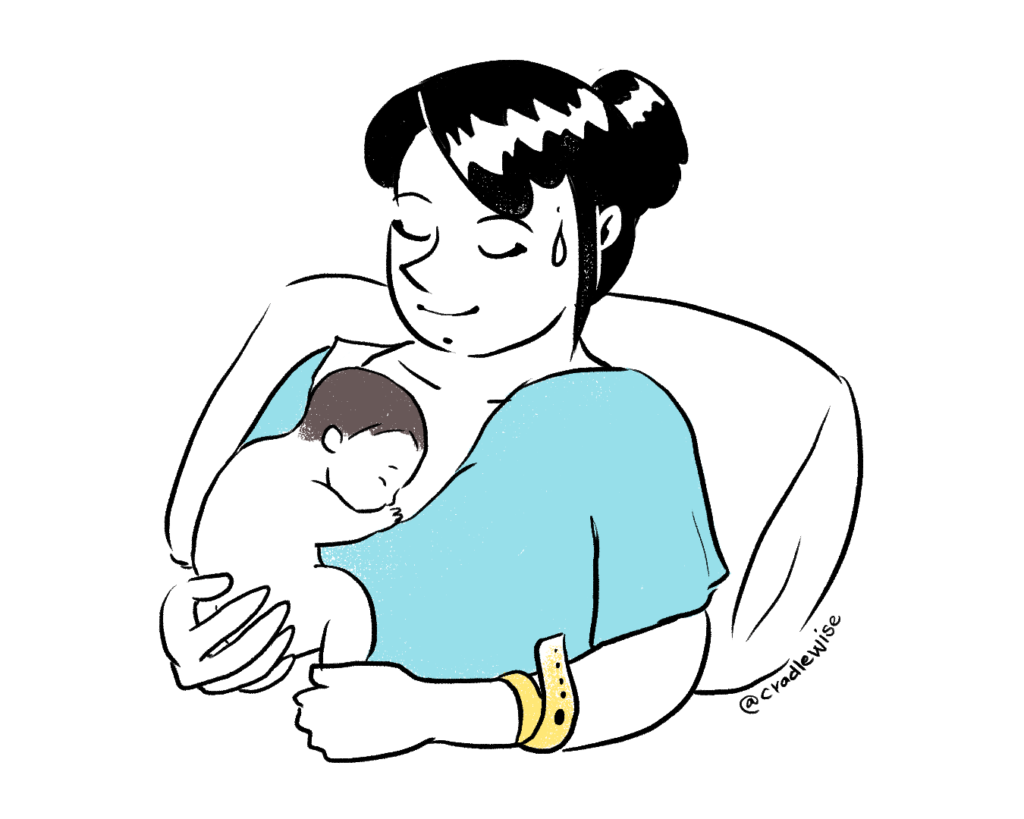
The bond between the mother and the baby forms long before the baby’s birth. This bond creates an instinct in the baby to be close to the mother. A mother’s touch is the most comforting sensation for a baby.
What are the skin-to-skin contact guidelines for newborns?
The American Association of Pediatrics (AAP) now recommends the following practices to be followed during the Golden Hour:
- Healthy newborns should be placed in “skin-to-skin” contact with the mother. During this time, the first round of breastfeeding is established.
- The medical caregivers can conduct the first physical assessment of the baby while on the mother’s chest.
- Mother and baby should remain together throughout the recovery period.
- Conventional procedures such as weighing, measuring, assigning Apgar scores, giving the mother and baby ID bracelets, bathing, injections, or blood tests should wait until after the first feeding.
Skin-to-skin contact (SSC) during the Golden Hour and over the coming days is beneficial to both mother and child.
What is the first sense a baby develops?
Touch is an integral sense that helps us experience the world. “Touch is the first sense to emerge in utero, and though far from mature, it is the most strongly developed sense at birth,” says science writer Lydia Denworth.
Did you know?
Touch is the first sense to develop for your baby as early as 7.5 weeks.

Did you know?
Touch is the first sense to emerge for your baby. It develops as early as 7.5 weeks.
At 7.5 weeks, your baby can first sense touch on their lips and nose. They then extend to touch the rest of their body, from touching the lips or nose to touching the uterine wall and face.
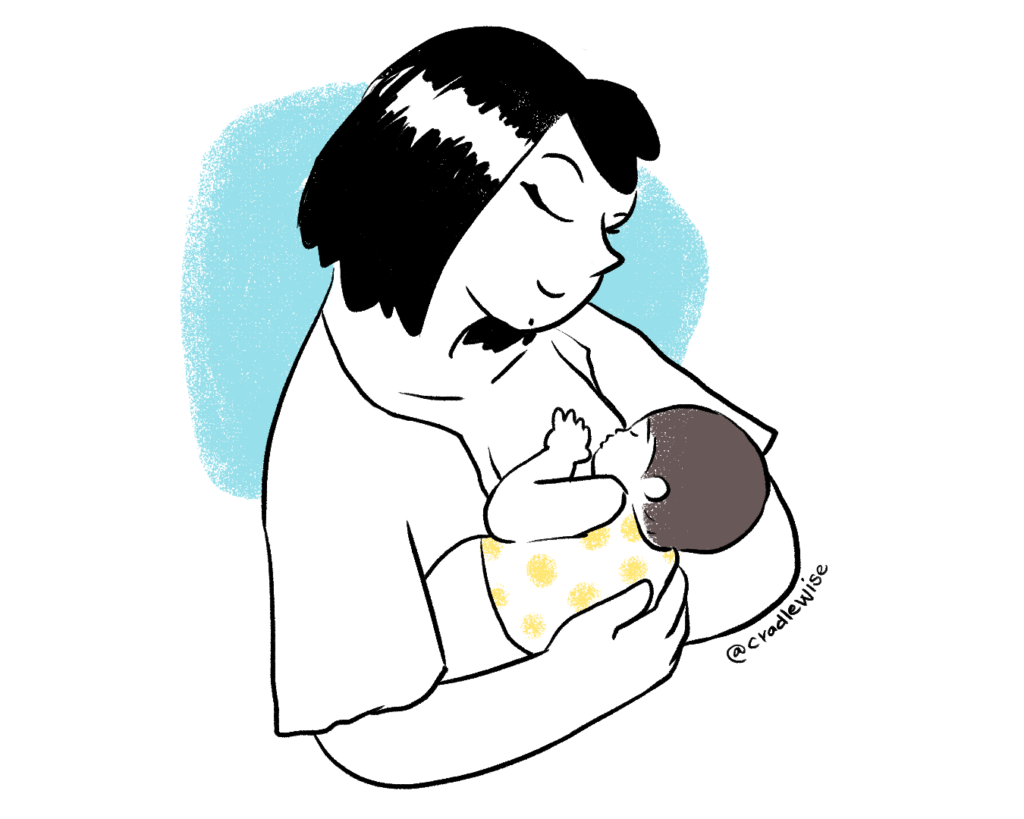
At 7.5 weeks your baby can first sense touch on lips and nose. This quickly extends to the rest of his body, as she goes from touching her lips or nose to touching the uterine wall, face and rest of the body.
The skin and the receptors therein constitute both the oldest and the largest of our sense organs.
How does touch help my infant learn?
Touch is a critical survival sense, as it enables a baby to suck, swallow and cough at birth.
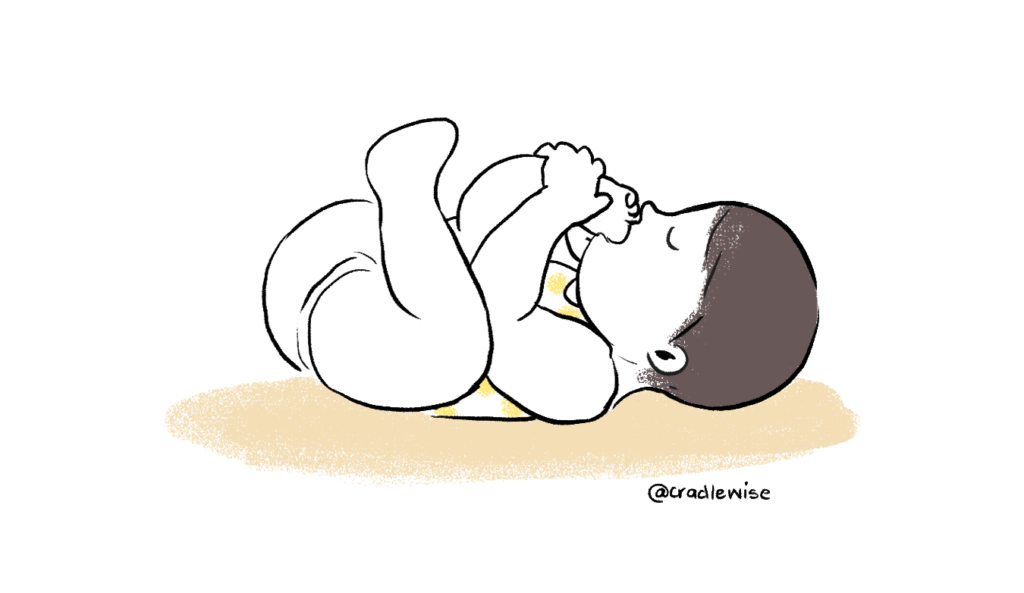
Infants learn about their environment through touch. Ever seen an infant grab their own limbs and put them in their mouth? That’s just their way of discovering what’s part of their own body.
Did you know?
The average adult male has around 18,000 square cm of skin, constituting about 16–18% of his body weight.

Did you know?
The average adult male has around 18,000 square cm of skin, constituting about 16–18% of his body weight.
The quality of emotional bonding during our childhood influences our entire life. Our attachment with our parents defines our personality. The more secure we are in our attachment to our mom, the more likely we will experiment with new ideas, take more risks and follow the path less traveled.
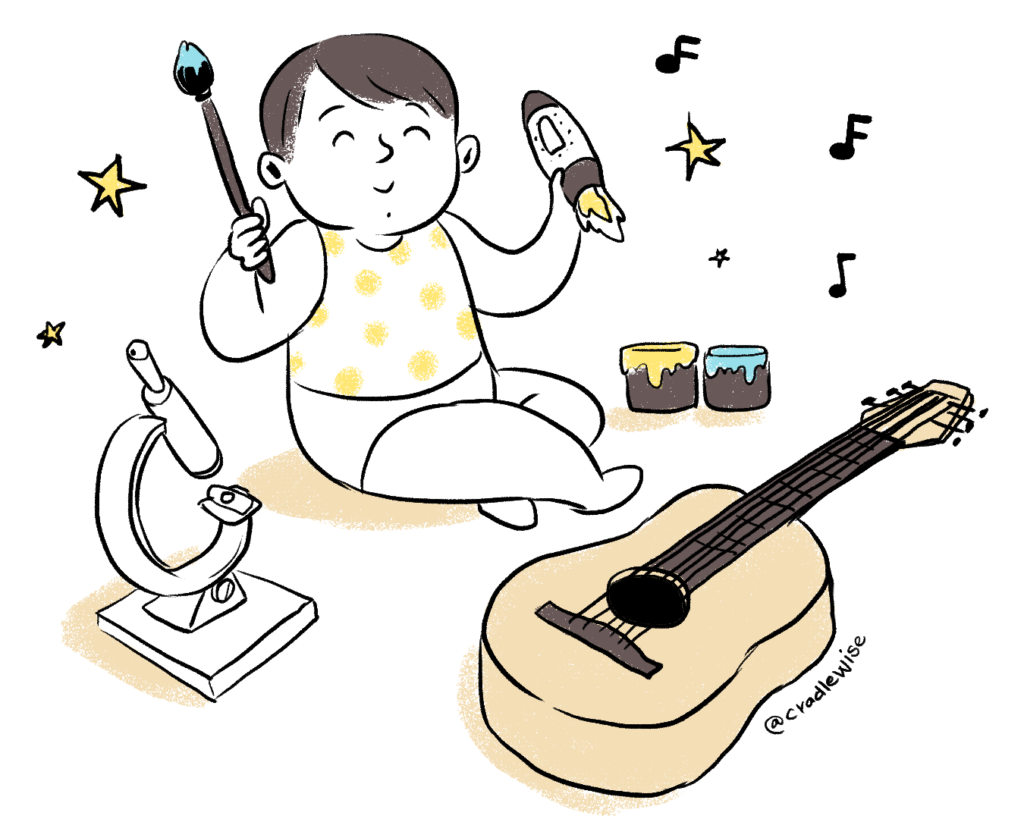
So moms, the day your baby is born, you are nurturing a technologist, biologist, artist, or who knows, maybe a rocket scientist!
What are the benefits of skin-to-skin contact and mother’s touch?
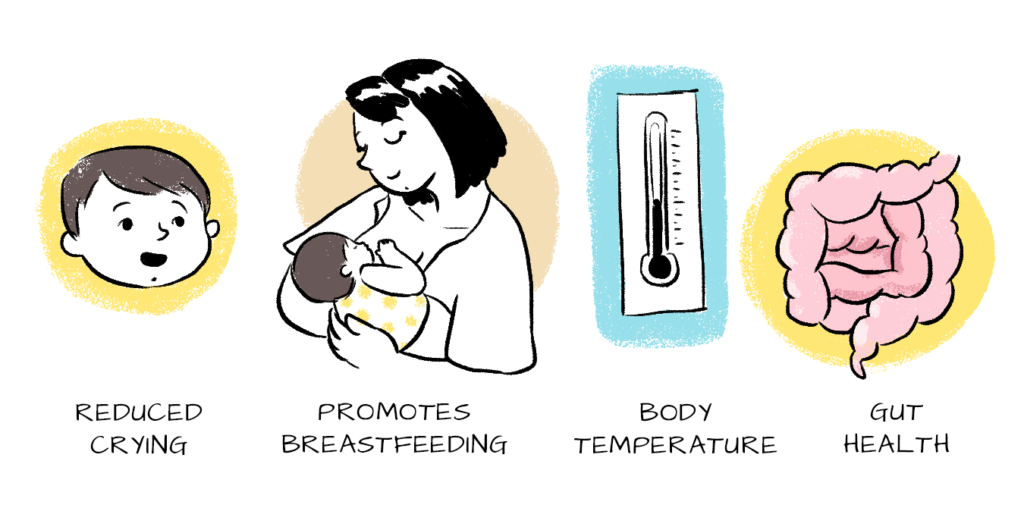
Some benefits of a mother’s touch are :
Reduced crying:
Data shows that babies, who receive skin-to-skin touch, cry less. A mother’s touch produces a sense of security in the baby, which stops the baby from crying.
If the baby is fussy, carry your newborn in front of you, kangaroo-style. The physical closeness recalls the natural state of mom and child(specifically the in utero conditions). In this position, your baby can smell you, listen to your heart and lungs, and feel the warmth of your body.
Promotes breastfeeding :
The physical closeness and bonding between mother-baby promotes the secretion of the hormone oxytocin, also called the “love hormone.” Oxytocin helps in establishing lactation.
A 2016 study was conducted to study the effects of early skin-to-skin contact on over 3000 mothers and their healthy infants. More women who had early skin-to-skin contact with their babies were still breastfeeding at one to four months after birth.
Body temperature:
Imagine being taken out of your warm house and left outside in the cold. That is exactly how a baby feels when removed from the warmth and comfort of the mother’s womb. They require a similar environment. And the best place to receive this much-required warmth is the mother’s chest. Research shows that the skin temperature of a new mother’s chest is a degree or two higher than the rest of her body. Even more astounding is that mothers can thermo-regulate their chest temperature. Depending on the baby’s temperature, a mother’s chest temperature increases or decreases.
Gut health:
Kangaroo care encourages the vagal nerve. This, in turn, enhances the growth in the size of the villi in the infant’s gut. This allows a larger surface area for the inclusion of nutrients. Skin-to-skin touch also helps in balancing the blood sugar levels in the infant.
Physiological stability:
Skin-to-skin contact is also beneficial for stabilizing breathing patterns, heart rate, and blood oxygen levels.
What are the benefits of Kangaroo Care for newborns?
Have you heard of the term “Kangaroo Care”?
No, it has nothing to do with the marsupial looking after your little one.
It is a caregiving method that originated in Bogota, Columbia. Due to the shortage of incubators and the risk of infections from shared incubators, parents tucked their premature babies inside their shirts. This provided the much-needed warmth for the baby.
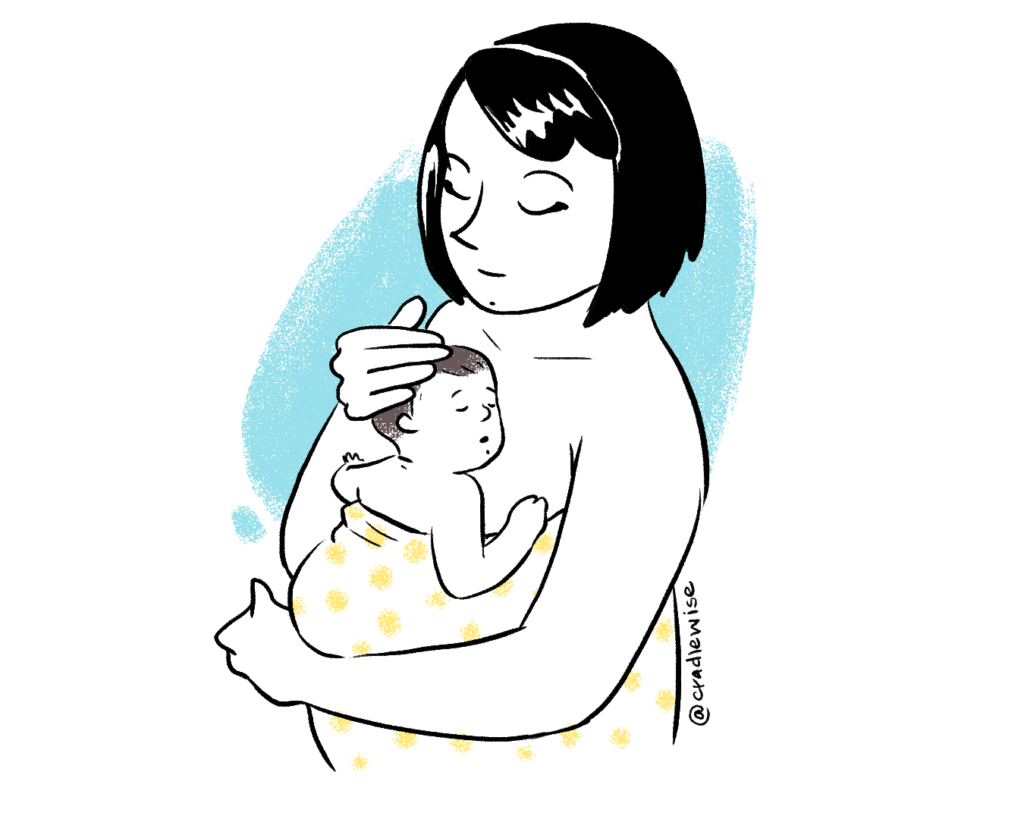
In fact, Kangaroo care is a very powerful tool in the hands of parents of preterm babies.
Read this story on how an Australian mum’s premature-born son pronounced dead by the doctors was revived. The mother said that the achievement was due to holding and giving the baby two hours of loving cuddles.
While this may be a miracle or a one-off case, it does not take away from the beneficial power of skin-to-skin contact.
Mother’s touch benefits preterm babies
Mother’s touch can compensate for early neuro-sensory deficits and promote neurodevelopment for low birth weight infants. A gentle touch is known to reduce distress and crying in preterm infants.
NICUs are now employing therapists who can provide gentle massages for preterm babies. The type of massage differs, depending on the condition of the infant.
Preterm infants need a gentle touch without any movement over the limbs. As the infant matures, gentle stroking can be added. The pacifying effect that massage has on preterm infants could benefit their health and reduce their time in the NICU.

Moderate pressure massage increases the movement of the GI tract and releases digestive juices. It also helps release insulin (a food absorption hormone) and IGF-1(a growth hormone).
Visual-motor skills, neurological developments, and gross motor advancements were observed in low birth weight infants if they received mother’s touch during the early caregiving period.
Baby massage across different cultures
A daily massage is another example of skin-to-skin contact practiced across cultures.
This is a common practice in most Indian households. Babies go through a daily massage till they turn a year old.
The motivation for massage in different cultures varies.

In India, it’s believed to increase blood circulation, give a good body shape and strengthen the bones.
British infant massage therapists say massage improves the bonding between mothers and babies.
New Zealand Maori mothers focus their massage on their baby’s knees and ankles, believing it will make joints supple and their children graceful.
In Bali, massage is thought to be particularly helpful for colic relief in infants.
In Russia, it is believed that massage helps develop the central nervous system.
Baby massage benefits
Research findings show that stroking or massaging provides both immediate and long-term benefits. Some of these include:
- Better sleep and wake cycles
- Improved weight gain
- Reduced apnea
- Enhanced development outcomes
- Enhanced parent-infant bonding
Dads can use massage to bond with baby
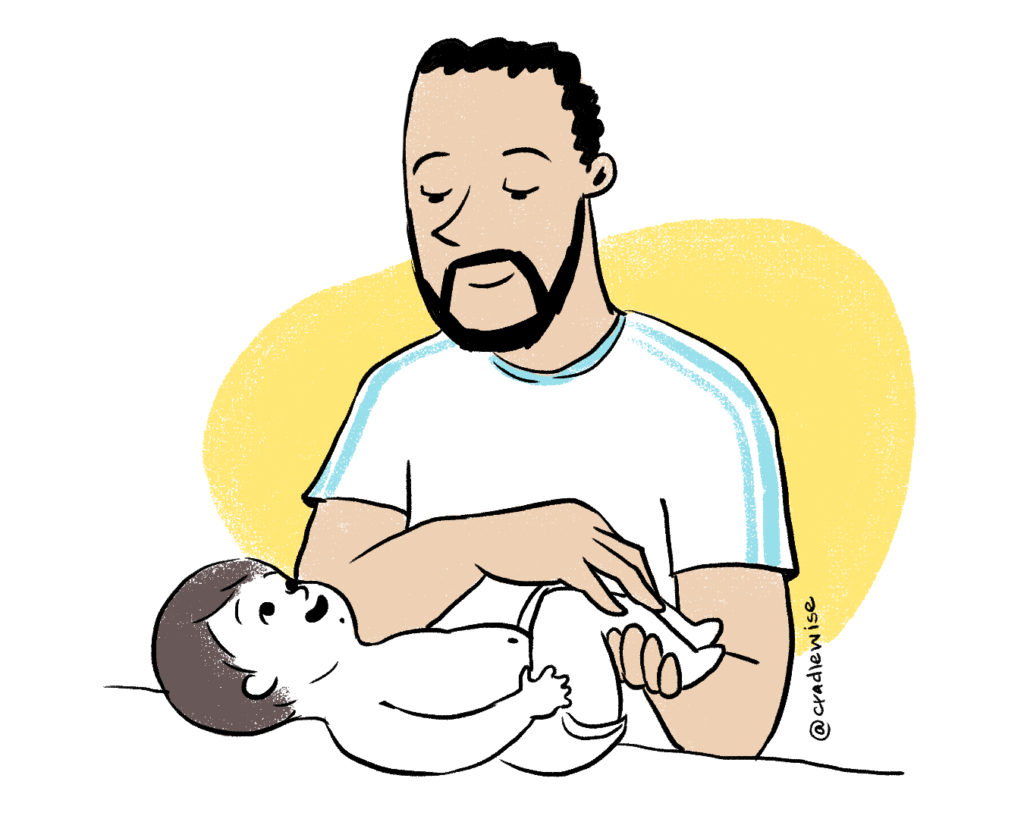
Dads, you can use massage to bond with your baby! Make it an everyday bedtime routine to perform an oil massage for your baby.
Newborns need hugs and cuddles for development

Compared to other mammals, human babies are born with bare essentials. Only those that it needs to survive. But with a brain that starts the learning process immediately.
Learning requires an environment conducive to it. It is vital that the baby feels secure and comfortable for the learning process.
Imagine yourself trying to learn how to saw wood while wearing roller-skates! Difficult, if not impossible, isn’t it? Well, the same applies to the baby. Creating that environment for the baby is relatively simple – a mother’s touch.
FAQs
Q: Should you continue skin-to-skin after the first hour?
A: According to Sanford Health, skin-to-skin contact can benefit babies for months. So snuggling up to your baby after the golden hour or once you’re home from the hospital, is encouraged.
Q: Can skin-to-skin be helpful during painful procedures?
A: In a study conducted by the National Institutes of Health, that measured heart rate and crying, skin-to-skin contact can be effective in reducing infant pain during painful procedures.
Sources:
- Levels of oxytocin increase during labor and birth. PubMed. 1996. “Oxytocin: key hormone in sexual intercourse, parturition, and lactation”
- Practices to be followed during golden hour. Sanford Health. 2018. “The ‘golden hour’: Giving your newborn the best start”
- Touch is the most strongly developed sense at birth. Scientific American. 2015. “The Secret Social Power of Touch”
- The skin and the receptors are the oldest and the largest sense organs. Science Direct. 2010. “The science of interpersonal touch: An overview”
- Attachment with mom defines baby’s personality. Scientific American. 2010. “All about My Mother: How Touch Helps Us Take Risks”
- Reduced crying. Kidmish. 2018. “10 Amazing Benefits of Mother’s Touch for a Baby”
- Promotes breastfeeding. Sanford Children’s Health. date . “Give ‘Em Some Skn: Skin-to-skin contact between babies and parents”
- Early skin-to-skin contact resulted in breastfeeding upto four months after birth. Cochrane Library. 2016. “Early skin-to-skin contact for mothers and their healthy newborn infants”
- Mothers can thermoregulate chest temperature. Scientific American. 2010. “How important is physical contact with your infant”
- Physiological stability. Psychology Today. 2017. “More proof that skin-to-skin contact benefits babies’ brains”
- Parents tucking premature babies under their shirts gave warmth. American Academy of Pediatrics. 2020. “Implementation of a Team-Based Golden Hour Quality Initiative to Reduce Hypothermia and Improve Care Provided to Very Low Birth Weight Infants”
- Baby revived after pronounced dead. Ny Daily. 2010. “Miracle at birth? Mom in Australia says ‘kangaroo care’ helped revive her ‘dead’ premature baby”
- Beneficial power of skin-to-skin contact. Maternal Health, Neonatology and Perinatology. 2017. “Golden hour of neonatal life: Need of the hour”
- Reduce distress and crying of preterm infants. PubMed. 2003. “The bio behavioural effects of gentle human touch on preterm infants”
- Massage on preterm infants can reduce their time in NICU. Our Story of Love. 2008. “Exploring Neonatal Touch”
- Promote weight gain. Oxford Academic. 2003. “Stable preterm infants gain more weight and sleep less after five days of massage therapy”
- Increases movement of GI tract and releases digestive juices. Science Direct. 2005. “Vagal Activity, Gastric Motility, and Weight Gain in Massaged Preterm Neonates”
- Visual-motor skills, neurological developments, and gross motor advancements observed in low birth weight infants. Taylor and Francis Online. 2009. “Maternal Tactile Stimulation and the Neurodevelopment of Low Birth Weight Infants”
- Massage in different cultures. Taylor and Francis Online. 2006. “Keep in touch: The importance of touch in infant development”
- Enhanced development outcomes. Cochrane Library. 2006. “Massage intervention for promoting mental and physical health in infants aged under six months”
You may also like



